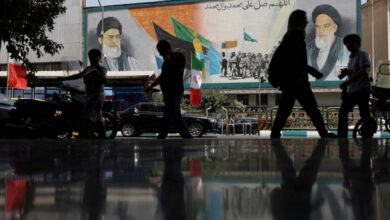Kuwait navigates global turbulence amid Trump’s “tariff bomb” and trade shifts
Trump’s tariffs triggered market instability across the Gulf, with Kuwait’s market losing around $500 million. Despite this, tariffs on Kuwaiti oil stayed low, and Kuwait continues applying a 5% GCC tariff on U.S. goods.

-
Trump’s new tariffs sparked global concern and led to steep declines in U.S. and Gulf markets.
-
Gulf states, including Kuwait, face reduced competitiveness and may seek alternative export markets.
-
Kuwait has applied a standard 5% GCC tariff on most U.S. imports since 2003.
-
Bilateral trade remained steady over decades, shaped by WTO, GATT, and GCC agreements.
The moment U.S. President Donald Trump set off what some have called the “tariff bomb,” financial policymakers around the globe began scrambling to evaluate the potential economic fallout. The Gulf States, in particular, were keen to understand the impact of the 10 percent tariff imposed on all their exports to the United States.
In this context, the key question revolves around the impact of the tariff decision on Kuwait’s economy, finances, and trade. This concern has sparked a series of inquiries from multiple sectors regarding how the new measures will affect the trade balance between Kuwait and the United States, as well as the future of joint investments. This is especially significant given Kuwait’s ongoing commitment to open market policies and maintaining low customs tariffs, which have traditionally been a cornerstone of its economic strategy.
On the whole, the full extent of the regional impact of Trump’s tariff remains uncertain. While Kuwait and the Gulf States were fortunate to receive the lowest rate on the list at 10 percent, the decision still raises concerns about the future appeal of the U.S. market to Kuwaiti investors.
The Gulf States typically impose relatively low tariffs, often 10 percent or less, on most goods, and their currency pegs to the dollar have shielded them from criticism regarding currency manipulation. However, the long-term effects on trade relations and investment flows remain to be seen.
In terms of Kuwait’s impact from the Trump tax, it can be argued that, as a primarily importing nation, Kuwait’s non-oil exports to the U.S. are limited. Moreover, given the relatively low volume of bilateral trade between the United States, Kuwait, and the Gulf States in general, the basic tariffs are likely to have a minimal effect on the region. This limited exposure to U.S. markets means the impact of the tariffs may not be as severe for Kuwait compared to other economies with higher trade volumes with the U.S.
However, lingering concerns, which remain somewhat unclear, revolve around the potential indirect impact on the Gulf and Kuwait. These concerns are driven by the possibility of rising global inflation rates or an increase in transportation costs to and from Kuwait.
In practice, what holds far greater significance in the Gulf’s calculations are the indirect effects of reciprocal tariffs on the U.S. economy and global trade flows. This is particularly crucial since there is a widespread belief that the tariffs may have an inflationary effect, while also potentially stalling economic growth.
Numerically speaking, the trade volume between the U.S. and Kuwait in 2024 was approximately $3.5 billion. However, a closer look at the figures reveals that U.S. imports to Kuwait make up the majority of this total. In fact, these imports reached $3.45 billion, marking a 3.7 percent increase compared to 2023. On the other hand, Kuwaiti exports to the U.S. saw a significant decline, falling by 60.2 percent to just $36.52 million.
Kuwaiti exports to the U.S. have experienced notable fluctuations over the past five years. In 2019, they stood at KWD 15.631 million, before rising to KWD 17.494 million in 2020. However, exports then declined to KWD 12.089 million in 2021, before sharply increasing to KWD 51.897 million in 2022. By the end of 2023, Kuwaiti exports to the U.S. had fallen again to KWD 28.271 million, reflecting the volatility in trade between the two nations.
Kuwait has established a strong economic presence in the United States through entities like the Kuwait Investment Authority and the Public Institution for Social Security. Since 1960, over 42 agreements and Memoranda of Understanding (MoU) have been signed between the two countries across various sectors, including more than six focused specifically on trade and investment. In addition, Kuwait has a diverse portfolio of investments throughout the U.S., spanning key areas such as; food security, technology, and real estate, alongside strategic investments in the private sector.
Major U.S. exports to Kuwait include transportation equipment, such as automobiles and parts, machinery, and chemical products. On the other hand, Kuwait’s primary exports to the U.S. consist of refined petroleum and crude oil.
The imposition of the U.S. tariff is expected to raise the cost of Kuwaiti imports to the U.S., potentially making them less competitive compared to domestic products or those from other countries not subject to these tariffs. As a result of the higher prices, demand for Kuwaiti products in the U.S. market could decrease, leading to a reduction in the volume of Kuwaiti exports.
Furthermore, there may be repercussions on U.S. imports to Kuwait. While customs duties are imposed on U.S. goods entering the U.S., similar measures taken by Kuwait or other nations in response could lead to trade disruptions, affecting the flow of goods in both directions.
On the other hand, tariffs could disrupt global supply chains, potentially affecting Kuwaiti companies that rely on components or raw materials imported from the United States or other countries impacted by the tariffs.
In a statement to Al-Rai, Dr. Nasser Al-Ziyadat, an economic researcher at Monash University in Australia, noted that the imposition of customs duties would have both economic and geopolitical repercussions. He emphasized that he would not focus on the direct trade impact of these duties, as their effect would be marginal in comparison to the broader changes expected in the global economy.
Al-Ziyadat believes that if the tariffs persist for an extended period, potentially at least a year, they could lead to the fragmentation of the global economy, the formation of new economic blocs, and the eventual isolation of the United States. He points out that since the establishment of the World Trade Organization (WTO); the global economy has functioned as a single bloc, largely under U.S. influence due to the dominance of the dollar in international financial transactions. However, with the rise of new economic blocs, the U.S. could face negative repercussions, as its global influence weakens.
Moreover, Al-Ziyadat explained that the rise of new economic blocs in response to U.S. tariff policies, along with the resulting increase in duties and prices, would have significant geopolitical repercussions. He highlighted China’s ongoing implementation of the Belt and Road Initiative and the involvement of Pakistan, an ally of the U.S., as factors that raise the question of which side Pakistan will align with in the future. He also pointed to the geopolitical competition over Sri Lanka and China’s efforts to assert dominance in Southeast Asia, suggesting that these developments could reshape the global power dynamic.
Regarding the Gulf States, Al-Ziyadat explained that their economies are heavily reliant on oil exports, and any decision to increase customs duties would ultimately depend on political will. He outlined two potential scenarios.
The first suggests that China, as a major consumer of Gulf oil, benefits from the Belt and Road Initiative, which could serve as a positive factor for the Gulf States, ensuring continued oil exports to China.
The second scenario raises concerns about the emergence of geopolitical competition over critical sea lanes and straits, which could disrupt supply chains and create obstacles to the Gulf’s oil exports, negatively affecting the region’s economy.
Customs Tariffs
Regionally, the tariff decision is expected to have significant economic repercussions for the Gulf States. As major suppliers of energy and petrochemical products to the United States, they will now face a new challenge: higher export costs and reduced competitiveness in the U.S. market. This development may push Gulf exporters to explore alternative markets, which could, in turn, affect the volume of trade between the two regions.
The latest projections from the U.S. Federal Reserve indicate that the world’s largest economy is expected to grow by just 1.7 percent this year.
Federal Reserve officials are preparing to maintain high U.S. interest rates in the near term, which will result in continued elevated borrowing costs in the Gulf due to the currency pegs.
Meanwhile, the OECD’s forecast last month indicated that Trump’s tariffs would weigh on economic performance, prompting a downgrade in its global growth outlook, from 3.2 percent in 2025 to 3.1 percent, and further down to 3 percent in 2026.
Reactions
Justin Alexander, Director of Gulf Economics, stated that the biggest and most significant impact is the trade war’s effect on the strength of the global economy, and therefore on oil and gas demand. It is bound to be negative. He noted that the Gulf countries hold a unique position as open economies in a world increasingly leaning toward protectionism, which enhances their appeal to investors. He added that in general, the Gulf is in a good position compared to many other countries.
Trump’s actions triggered a broad array of international reactions, largely marked by concern and warnings about the risks of escalating trade tensions. China’s response was the most forceful, which is unsurprising given the substantial scope of tariffs targeting Chinese exports, exceeding 30 percent and affecting a wide range of products. This move has cast a long shadow over the future of trade relations between the world’s two largest economies.
American Recession
Trump’s “Liberation Day” tariffs have sparked widespread concern over the future of global economic growth, especially in the United States, amid expectations that these measures will remain in effect for a prolonged period without review or modification.
US Stocks Lose $2 Trillion
US stocks plunged sharply at the opening bell yesterday, accompanied by a weakening dollar. The S&P 500 index dropped 3.4 percent in early trading, while the Nasdaq Composite fell 4.6 percent, driven by an 8 percent slide in Apple shares. According to Bloomberg, US equities lost approximately $2 trillion in market value during the first trading session after the tariff announcement.
Wall Street’s fear index surged by 25 percent, reaching its highest level since January.
Gold prices also edged lower after reaching an all-time high, slipping 1.4 percent to $3,090 an ounce in spot trading, as investors engaged in profit-taking.
Spot silver dropped 4.7 percent to $32.44 an ounce, marking its lowest level since March 11. Platinum declined 2.6 percent to $957.60, while Palladium slipped 1.6 percent to $954.78.
Gulf Stock Markets Lose $51.5 Billion
Most Arab financial markets recorded sharp declines following the announcement of new US tariffs targeting Arab countries by President Donald Trump.
Gulf stock markets suffered losses totaling around $51.5 billion on Thursday, with Kuwait accounting for approximately $500 million of that amount. (Note: Qatar and Oman markets were closed.)
Oil prices fell 6.58 percent on Thursday.
Chronological list of customs duties between Kuwait and the United States
The tariff history between Kuwait and the United States, spanning from Kuwait’s independence in 1961 up to the eve of Trump’s announcement, reflects a generally stable trade relationship. This relationship, largely centered on oil, experienced only minor shifts in tariff rates over the decades, wherein fluctuations influenced more by global trade norms and regional geopolitical developments than by direct bilateral disputes.
Based on available data, official government sources, and documents pertaining to trade between the two countries, a historical review of Kuwait–US relations reveals the following key developments:
- Following its independence from the United Kingdom on June 19, 1961, Kuwait established diplomatic relations with the United States on September 22 of the same year. Initially, trade between the two countries developed without specific bilateral tariff agreements, as Kuwait had not yet joined international trade organizations such as the General Agreement on Tariffs and Trade (GATT). At the time, US tariffs on Kuwaiti goods, particularly crude oil were governed by the US Tariff Act of 1930 (known as the Smoot-Hawley Tariff). This act imposed average tariffs of around 50 percent on manufactured imports, while raw materials like oil were subject to significantly lower rates, typically between 5 and 10 percent.
- During the 1970s, Kuwait became a key oil exporter to the United States. Moreover, U.S. tariffs on Kuwaiti crude oil imports remained minimal typically less than 1 percent amounting to around 5 cents per barrel in 1974 under Section 401 of the Trade Act of 1974. This reflected a broader U.S. policy aimed at encouraging energy imports. On the other hand, Kuwait did not impose significant tariffs on U.S. goods, as its economy was primarily driven by oil revenues rather than customs duties.
- Iraq’s invasion of Kuwait in August 1990 led to a disruption in trade between Kuwait and the United States. After Kuwait’s liberation in February 1991 by a U.S.-led coalition, trade relations resumed without immediate changes in tariff structures. The United States continued to impose low tariffs on Kuwaiti oil, approximately 10 cents per barrel under the 1991 tariff schedule. Meanwhile, Kuwait applied a flat 4 percent tariff on most U.S. imports, in line with the unified customs regime adopted by Gulf countries.
- Kuwait became a contracting party to the General Agreement on Tariffs and Trade (GATT) on May 3, 1994, thereby committing to apply most-favored-nation (MFN) tariff rates. This ensured that U.S. exports to Kuwait were subject to non-discriminatory tariffs, generally averaging between 4 to 5 percent on manufactured goods. In turn, U.S. tariffs on Kuwaiti exports primarily petroleum, remained minimal, typically ranging from 0.1 to 0.5 percent under MFN provisions.
- Kuwait joined the World Trade Organization (WTO) on January 1, 1996, further formalizing its commitments to international trade rules. The United States continued to apply most-favored-nation (MFN) tariffs to Kuwaiti exports, with petroleum products facing an average tariff of approximately 0.34 percent. On the other hand, Kuwait maintained average bound tariff rates of 5 percent on U.S. goods, although in practice, applied rates were often lower due to Kuwait’s generally open trade policy.
- On January 1, 2003, Kuwait began implementing the provisions of the Gulf Cooperation Council (GCC) Customs Union, which introduced a unified external tariff of 5 percent on most imports from non-GCC countries, including the United States. Exceptions applied to a list of exempted goods, such as specific food items, which were subject to a 0 percent tariff. Meanwhile, U.S. customs duties on Kuwaiti exports remained unchanged, with tariffs on petroleum products continuing to range between 10 and 52 cents per barrel, depending on the crude oil type.
- On February 5, 2004, the United States and Kuwait signed the Transitional Foreign Investment Agreement (TIFA) to strengthen trade and investment relations between the two countries. While the agreement did not directly alter tariff structures, it established a platform for dialogue to address trade barriers, including tariffs. In 2002, U.S. exports to Kuwait totaled $1 billion and were subject to the 5 percent GCC tariff, while Kuwaiti exports to the United States, primarily oil, valued at $2 billion that faced an average tariff of 0.3 percent.
- The United States signed a framework agreement on trade, economic, investment, and technical cooperation with the Gulf Cooperation Council (GCC) in 2012, which Kuwait ratified in 2014. This agreement resulted in the GCC maintaining a common external tariff of 5 percent on U.S. goods. Meanwhile, U.S. tariffs on Kuwaiti oil exports remained low, averaging around 34 cents per barrel on refined petroleum products.
- On March 8, 2018, the United States imposed a 25 percent tariff on steel imports and a 10 percent tariff on aluminum imports under Section 232 of the Trade Expansion Act of 1962. Kuwait, as a non-exporter of these goods to the U.S., was not initially exempted from the tariffs but experienced minimal impact, as its exports to the U.S. were primarily focused on oil rather than metals.
- As of April 3, 2025, no significant changes to the tariff structure between the United States and Kuwait have officially taken effect since 2018. The U.S. continues to apply a tariff of approximately 0.34 percent on Kuwaiti oil exports (averaging 10 cents per barrel of crude oil), while Kuwait maintains the Gulf Cooperation Council’s common external tariff of 5 percent on most U.S. imports.













